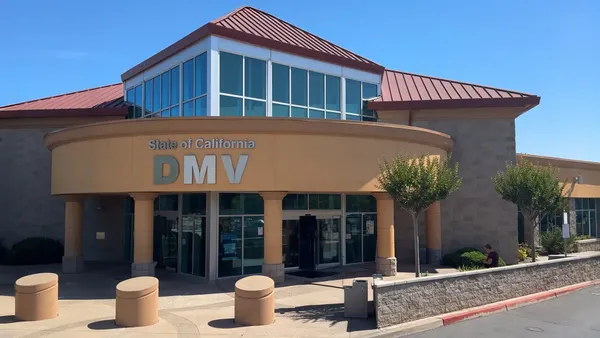Shared mobility is a topic that's created a buzz over the last decade, but its underlying concept is well established: "It is really a term used to describe any transportation services that are shared among users," said Tim Frisbie, communications and policy director at the Shared-Use Mobility Center.
That definition covers newer options like bike or car sharing, but it also includes old-school forms of public transportation like railroads. In fact, public transit "is kind of the original form of shared mobility," Frisbie said. "Where shared mobility does really well, it’s often in cities that have a really good transit background already... All of these modes team up to enable people to live car-free or car-light lifestyles."
Shared transportation resources certainly have experienced success in densely populated areas, but now more regions with smaller populations are exploring solutions to residents having to drive everywhere. "We’re starting to see it spread to mid-sized cities and smaller communities," Frisbie said. "People are working very hard to figure out how to make this stuff work in areas where there’s a need, but there’s a lower population density or other market conditions that make it a little harder." Two good examples are South Bend, IN, and South Lake Tahoe, CA, which both launched bike-sharing programs this summer.
Some shared mobility benefits are widely known, such as reduced traffic congestion and pollution compared with relying solely on single-occupancy vehicle trips. It also offers alternatives to the high cost of owning a car, which AAA says is an average of $8,500 each year when considering actual vehicle price, maintenance, fuel and insurance. "Owning a car is very expensive," Frisbie said. "For a lot of people, especially those with low incomes, it's a real burden."
The push for car-light lifestyles in recent years — along with the rise of mobile device use — has prompted a slew of innovations in the shared mobility space, including city-wide bike sharing networks and ride-sharing services. Innovations continue to emerge, both in the form of fresh concepts and as new tweaks on old systems. Some of the new twists on well-known ride-sharing services like Uber and Lyft involve catering to specific populations.
- Female-focused ride-share services, such as Paris' Women Drive, employ women drivers and are aimed at female passengers. They're intended to boost women's safety and sense of security when getting into a vehicle with strangers.
- Businesses like SilverRide provide seniors with door-to-door service anywhere they desire, as well as physical assistance between the car and destination. Seniors make up a large group that can reap significant benefits from ride sharing, especially if they no longer have driver's licenses or the ability to drive.
- Kids can get in on ride-sharing, too, with services like Kango. Background-checked caregivers transport children, and parents can use the app to track the driver's progress.
Bike-sharing is a relatively new approach, but it's spurring plenty of new advances.
- Seattle noticed China's success with dockless bike-sharing and recently became one of the first U.S. cities to implement it. Users' trips aren't restricted to where they can find docking stations; instead, the bikes lock wherever the ride ends.
- Hilly areas present a challenge for bike sharing, but places like Park City, UT, find that electric battery-powered bikes may be the answer.
- Adaptive bike-sharing systems, like the one in Milwaukee suburb Wauwatosa, WI, focus on riders with special needs. Rather than simply offering traditional bikes, the stations have options like adult-sized tricycles and hand-operated cycles.
Some businesses are taking the general bike-sharing idea and expanding it to other types of vehicles.
- San Francisco is trying out something that works in many European cities: moped sharing. Plus, the fleet of vehicles is entirely electric.
- Singapore just launched an electric scooter sharing program in its downtown.
In addition to the shared mobility systems designed for bona fide transportation purposes, others are emerging that are largely recreational.
- South Florida and boating go hand-in-hand. Now a peer-to-peer boat rental startup allows enthusiasts to get on the water without the expense and hassle of owning a boat.
- Minneapolis has installed paddle share stations where people can rent kayaks and navigate the Mississippi River.
Although the recreational programs are fun, they're not as functional in terms of genuine shared mobility. "We don’t see a lot of those fun solutions as being very meaningful in terms of the mix of mobility options that are going to help people change the way they move around," Frisbie said. That being said, he believes that "some of that stuff... is fun and I might use it on a nice day if I want to get out on a lake or something."
Looking to the future, shared mobility proponents are honing in on hot territory: self-driving vehicles. "One of the major turning points on the horizon is autonomous vehicles. One of the questions is how are shared mobility and autonomous vehicles going to coincide?" Frisbie said. "We’re hoping that autonomous vehicles present an opportunity to take shared mobility to the next level by opening up shared, driverless rides."










